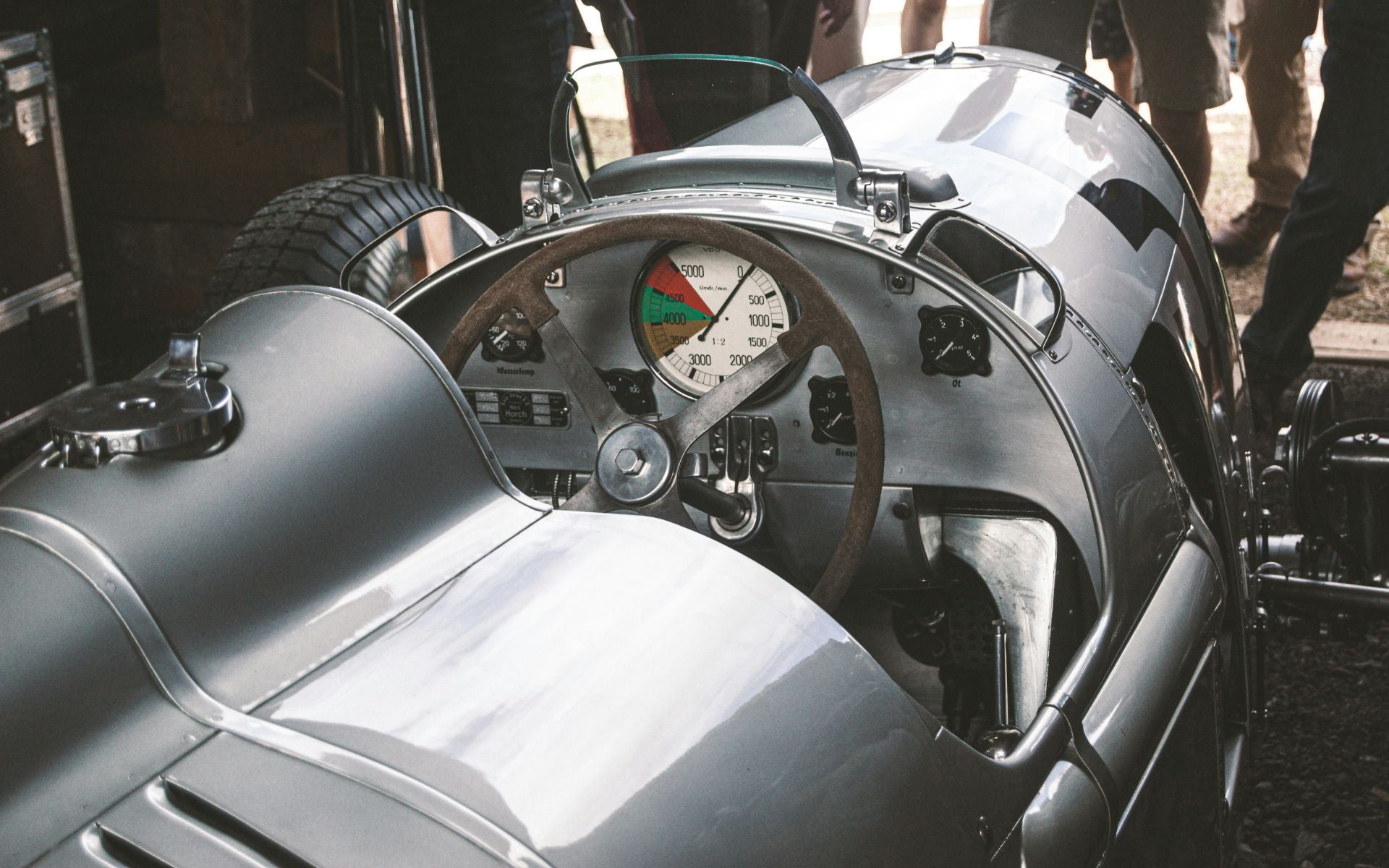Article: The fabulous story of the car coat

The fabulous story of the car coat
Passionate about outdoor living, we absolutely wanted to have a technical piece in our range that would protect us from the rain, wind, and even the cold. But with our elegance in mind, we also wanted a piece with style and character.
It was while delving into the archives that we found the piece that immediately captivated us: the car coat . It has survived the century, evolving with technological progress and social mores.
What is its story? How did we revisit it? That's what we're telling you here.
Born with the automobile in 1900
The car coat is first and foremost a functional piece.
While cars lack roofs and heating, drivers and passengers need protection. They also need to be able to move easily to repair these machines, which often break down.
Unsurprisingly, the first version of the car coat was long, loose, and warm. Made of leather, heavy tweed, or fur (or fur-lined), it featured buttons up to the neck. It was unisex because function was the priority.
As an anecdote, there is a summer version, in linen or wool (duster) to protect only from dust. 
the car coat is a status piece
The car coat quickly became a coveted social attribute. It signified that you were the proud owner of a vehicle. Drivers wore it in their daily lives to assert their status.
This is the beginning of the car coat's second life!

it transforms over time
The car coat initially followed the evolution of mechanical comfort. The convertible top and heating required a shorter and lighter garment.
But it also adapts to materials. In the 1920s, it was made from tweed, wool velvet, and Cheviot (sheep's wool 30 microns in diameter). Then, in the 1930s, suede and silk were even used.
In terms of construction, two major advances should be noted. The appearance of the zipper, which made it more practical. But also the raglan sleeve (seamless sleeve assembly at the shoulder), which improved freedom of movement.
the car coat then becomes the Jeep coat
As with the trench coat, its cousin, the army will seize its transformation.
And it was during the Second World War, by arriving at the wheel of open-top jeeps, that American troops popularized a new version of the car coat.
It is a little longer than a jacket (so as not to hinder driving comfort), has two pockets that rest on the knees when driving, and benefits from a high collar and a belt at the waist.

then modernizes again
The post-war period brought a revolution in synthetic materials. In the 1960s, nylon became even more lightweight and protective. Brushed fleece, quilted linings, and water-repellent treatments with washable suede were also used.
Even if some tricks remain (covered buttons so they don't get caught in the seat belt), in terms of style, the car coat is freeing itself from its initial function as a driving accessory.
It asserts its current style: mid-thigh length, two vertical pockets, straight collar.

we are including it in the movement!
We have obviously retained the DNA of the car coat: mid-thigh length, straight alcantara collar, raglan sleeves, covered buttons, diagonal exterior zipped pockets.
But also its level of performance! A three-layer technical fabric from Marzotto , in wool and viscose equipped with a windproof membrane makes it waterproof up to 10 meters of water. It is fully heat-sealed to increase its lifespan and lightness. All zippers are waterproof.
We added zips under the armpits to prevent sweating . And reflective strips under the cuffs and in the collar.
The history of this iconic piece is therefore far from trivial. Born from a necessary function (to protect, to warm), it has evolved with technological progress to constantly reinvent itself. Without losing its soul.
At a time when style and function are once again at the center of our concerns and lifestyles, we are proud of our car coat. Highly versatile, it will accompany you everywhere, with efficiency and character.
It's no coincidence that we named our car coat Boundless...



